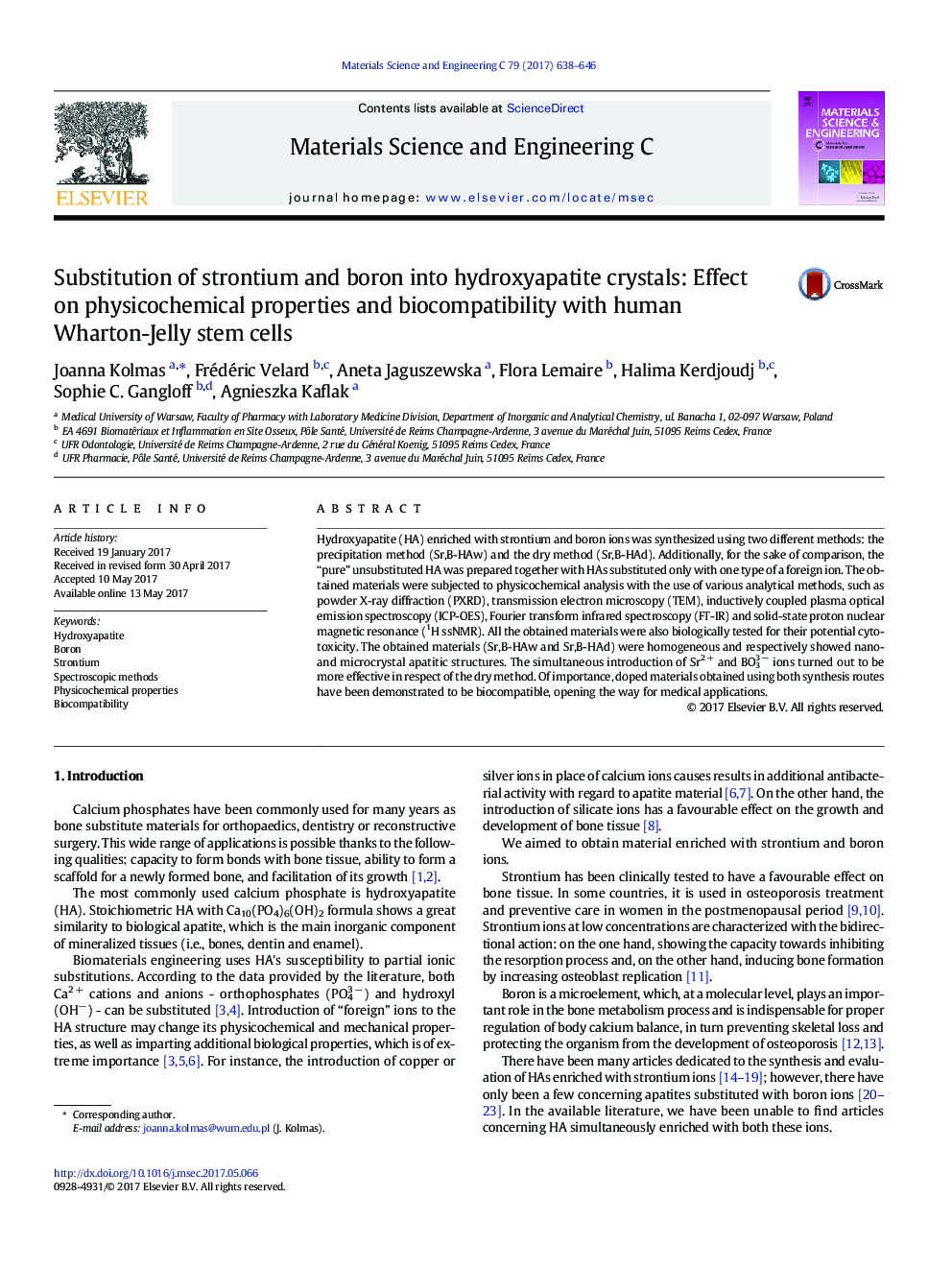| Article ID | Journal | Published Year | Pages | File Type |
|---|---|---|---|---|
| 5434770 | Materials Science and Engineering: C | 2017 | 9 Pages |
â¢We synthesized and analysed hydroxyapatites doped with boron and strontium.â¢For synthesis we used standard wet and dry methodsâ¢For analysis we used various analytical methods, i.e. PXRD, TEM, ICP-OES, ssNMR and FT-IR.â¢The biological activity in vitro of the materials was studied.
Hydroxyapatite (HA) enriched with strontium and boron ions was synthesized using two different methods: the precipitation method (Sr,B-HAw) and the dry method (Sr,B-HAd). Additionally, for the sake of comparison, the “pure” unsubstituted HA was prepared together with HAs substituted only with one type of a foreign ion. The obtained materials were subjected to physicochemical analysis with the use of various analytical methods, such as powder X-ray diffraction (PXRD), transmission electron microscopy (TEM), inductively coupled plasma optical emission spectroscopy (ICP-OES), Fourier transform infrared spectroscopy (FT-IR) and solid-state proton nuclear magnetic resonance (1H ssNMR). All the obtained materials were also biologically tested for their potential cytotoxicity. The obtained materials (Sr,B-HAw and Sr,B-HAd) were homogeneous and respectively showed nano- and microcrystal apatitic structures. The simultaneous introduction of Sr2Â + and BO33Â â ions turned out to be more effective in respect of the dry method. Of importance, doped materials obtained using both synthesis routes have been demonstrated to be biocompatible, opening the way for medical applications.
